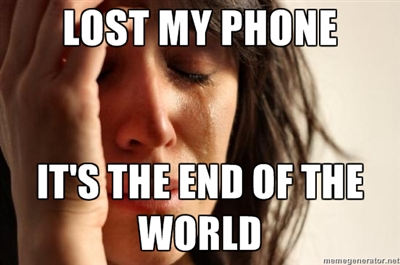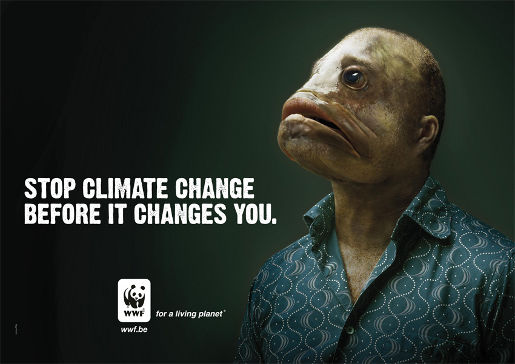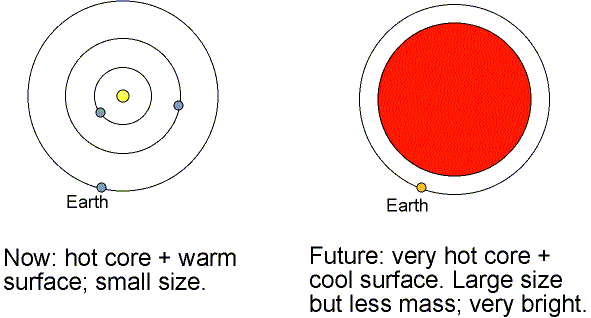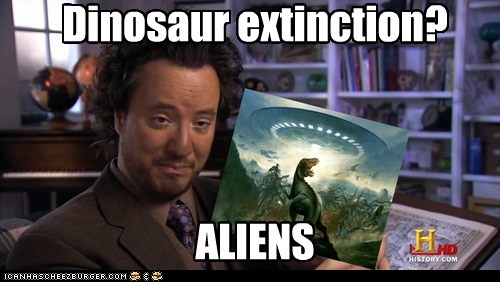No, the world is not going to end this week. That belief is too unfounded to be even worth a rebuttal.
Now that we have that out of the way, let us talk about more productive things, like how to really end the world. But before we can start with our crash course on world ending, let us first look at what people usually mean when they say the end is nigh. Based on a survey done by a reputable organization composed solely of the author of this article, when people say “the world is ending” they usually mean one the following things:
- they lost their iPhone;
- human civilization will collapse or people will be wiped out from the face of the Earth;
- all or a significant portion of life on Earth will end;
- the universe will end.
Since no one really cares if some hipster lost his iPhone, I hope everyone agrees that we can skip the first item. Let us now take a look at how we can successfully bring about the other three world-ending scenarios.

Bye Bye Humans
Here’s how you end human civilization: you do nothing. Or, to be more precise, you just allow humans to keep on doing what they are doing right now. I’m not kidding; just let them carry on with their lives. They’re already civilization-destroying forces just as they are.
How does this work? Here’s how it goes. If humans live as they live right now, then the amount of carbon dioxide in the Earth’s atmosphere will just keep on going up. This will have the effect of further messing up the Earth’s climate. If humans do not change, the climate will.

But how can climate change end human civilization? When it gets hot in here, can’t people just follow Nelly’s advice and take off all their clothes? Excellent as Nelly’s advice is (and I surely recommend it to some of more well-endowed human specimens), it simply wouldn’t do because the Earth’s systems are just so damned complicated. Even a mere 1-degree increase in global average temperature can ruin the whole delicate balance of the Earth’s life-supporting systems.

Let me mention just a few of the many possible nightmare scenarios that can be brought about by climate change.
First, sea level will rise significantly, causing many major cities to get flooded. If fishes want Manila City, they could inherit it someday, although I already here them saying “Thanks, but no thanks.” Students of UST know for a fact that nature has already been doing not-so-dry runs of this thing, and for those who wish to see the end of human civilization it’s all looking good.
Second, many ecosystems will be messed up and might even crash. Scientists who study the details of this nightmare scenario usually get a lot less sleep at night. But just to give you an idea, when an important ecosystem crashes, farms will fail, the sea will give up providing fishes (and I’m not even talking about overfishing yet), and the creatures that provide humans with much needed oxygen might simply call it quits.
If those scenarios have not impressed you yet, then this one might. Some scientists think that climate change might cause the ocean’s thermohaline circulation to stop. The thermohaline circulation acts as the ocean’s conveyor belt, distributing oxygen, carbon dioxide and nutrients throughout the ocean’s many levels. If this circulation stops, then much of the ocean will be reduced to a big puddle of stagnant water. When this happens, many ecosystems in the ocean will get messed up, and we’re back to the scenario discussed in the previous paragraph.
Well, that’s just climate change. There are other things that can cause the crash of human civilization without any help from a malevolent Loki figure, like the world’s oil reserves running dry, or overpopulation causing a population crash just like what happened to the reindeer of St. Matthew Island.
If you want to be more proactive in bringing about the demise of human civilization, then you might want to introduce a microbial pathogen that is downright nasty, spreads fast, and is quick to mutate and develop resistance to drugs, quite like the virus that caused SARS. Since international flights are so common nowadays, this pathogen will find it easy to go global. And while you’re at it, why not make it a virus that attacks the human immune system? In other words, why not make a nastier version of the HIV? Also, if you feel a little creative and sadistic, try to go for a zombie apocalypse virus. Although making it spread globally could be a bit tricky considering how strict airport authorities are when it comes to passengers who bite their airplane seatmates.

Hurtling Hunks of Rock
But if you really want to end a world, why just go for just one species out of the hundreds of thousands, possibly millions that call the Earth their home? When humans go extinct, will bad ass tardigrades give a damn? No.

Species come and go all the time; extinction is a part of life on Earth and it is the ultimate fate of all species that exist. Dodos and dinosaurs are not losers for going extinct, they just got there before humans did. (Although at the rate humans are going, they won’t be far behind.) Scientists estimate that around 99.9% of all species that have ever existed have now gone extinct. In fact, every few million years several species go extinct.
However, for us who want to see the world end, several extinctions every few million years are not enough. What we want is a mass extinction event, a massive blowout where up to 90% of all species on Earth bid goodbye to existence within a very short span of time. (And by “very short” we mean around a few million years.) Feel free to choose any of the following means to bring about your desired mass extinction event:
- Send a big hunk of rock (an asteroid, a comet or a big meteor) hurtling towards the Earth. If this hunk of rock is big and fast enough, its collision with the Earth can release the energy contained in millions of tons of TNT. How much energy is that? Well, just enough to boil much of the ocean. It will also be enough send tons of dust into the air, covering the Sun for years on end and causing the Earth’s climate to change – and we’re back to climate change, yay!
- Your big hunk of rock does not really need to hit the Earth to cause a lot of damage. If it’s big enough, even a close encounter with the Earth can cause a drastic change in the Earth’s orbital tilt, rate of rotation or distance from the Sun. If any of the mentioned things happen, creatures everywhere will suddenly find themselves in places too hot, too cold, too humid or too dry for them. Once this happens, many of the more choosy creatures – which is, well, most of them – will say goodbye to existence, and a cascade of extinctions will ensue.
- Turn up the Sun. Or, alternately, turn in down. Just do it quickly. The Sun has been having mood swings for billions for years now. However, it’s been doing it slowly enough that a lot of the Earth’s creatures were able to adapt to many of them. A sudden overabundance of sunlight, or a sudden lack of it, will surely change the climate drastically. Yes, you’ll never go wrong with climate change, fellow world-ender.
- Let the Sun go red giant. It will do this a few billion years from now, anyway, so why prolong the suffering of all earthlings? Go ahead and let their star become a big red ball that will boil all their oceans and possibly even consume their planet.

- Help the humans do their work of causing the sixth mass extinction. Scientists have discovered five mass extinction events in the 4.5-billion year history of the Earth. The most popular of the five is the one that led to the demise of all non-avian dinosaurs. Nearly all scientists agree that it was caused by an asteroid impact around 65 million years ago. (If you want to sound smart, call this the K-Pg mass extinction event. K-Pg stands for Cretaceous-Paleogene. It was between these two periods that the extinction event happened. It used to be called the K-T event, for Cretaceous-Tertiary.) The greatest of the five, however, was the Permian extinction event, also known as the Great Dying (dun dun dun!). The Great Dying (dun dun dun!) involved, well, a great amount of dying. 90% of all the species on Earth alive at the time, to be more precise. Many scientists think that a sixth extinction event is on the way, and it is caused by the joy humans derive from cutting down trees and polluting the seas. Hence, if you want to see the end of the world as we know it, you might give these Homo sapiens a little help in their endeavor.

- Life on Earth is resilient. The cosmos has been sending all sorts of nasty stuff to Earth for billions of years, and yet life goes on. If you really want to obliterate life on Earth, you might want to send a rogue black hole to the Solar System. The black hole will gulp up the Sun and all its planets and that’s the end of it goodbye thank y’all.
- If you want to be a bit more dramatic, you can make a supernova explode a few light-years from the Sun. Even though it’s billions of kilometers away from Earth, it will still incinerate all the planets of the Solar System, ending life in this sector of the galaxy for good.
Crunching and Heat
Yes, yes, I know, with billions upon billions of planets in the universe some of you might find it lame to end life in just one planet. You want to end all life in the galaxy, even in the universe, right? Well, unfortunately for us, the universe is such damned big place. How big, you ask? Well, damned big. If you want numbers, the observable universe is about 46 billion light years or 4,300,000,000,000,000,000,000,000,000 meters across. Good luck with trying to comprehend that.
One way of ending something this huge is by adding enormous amounts of matter to it. You can even add dark matter, if you’re into that sort of thing. If you add enough matter, this will cause the universe to become closed. In a closed universe that lacks dark energy, there will be enough matter to stop the current expansion. This will lead to a universal contraction and an eventual Big Crunch, which is just a delicious name for the opposite of the eve more deliciously-named Big Bang.

Unfortunately for those who like to crunch, the universe has a lot of this thing they call dark energy. Scientists know very little about dark energy, but whatever it is, it seems to exert a repulsive force that accelerates the expansion of the universe. If this is indeed the case, the only way for the universe to “end” is by undergoing a heat death. The heat death of the universe will happen when all the energy in the universe will be converted to useless energy, that is, energy that cannot be used to do work. This is given by the Second Law of Thermodynamics, which says that as time goes by, the energy in the universe gets more evenly distributed. Evenly distributed energy is heat, which is energy that cannot be exploited to do anything useful. Since life requires energy that can be used to do work, the head dead universe will not be able to support life of any kind.
Now to the important question, how can you bring about the heat death of the universe? Answer: you do nothing; let the Second Law of Thermodynamics do its work. Give it time. Be patient.
Take Home
So there you go, a teaser course on how to end the world. By now I think you would’ve noticed that it’s not really that difficult helping the world reach its demise. With lots of humans caring greatly about trivial things and little about things that matter, the world needs little help to meet its destruction. As a matter of fact, tremendous effort is expected not from those who want to end the world, but from those who want to pass it on the next generation. Even more effort is required from those who want to see a better tomorrow for their descendants. So it’s time to stop reading this article and start help building a better world for all of us. After all, the world is not ending anytime soon.

